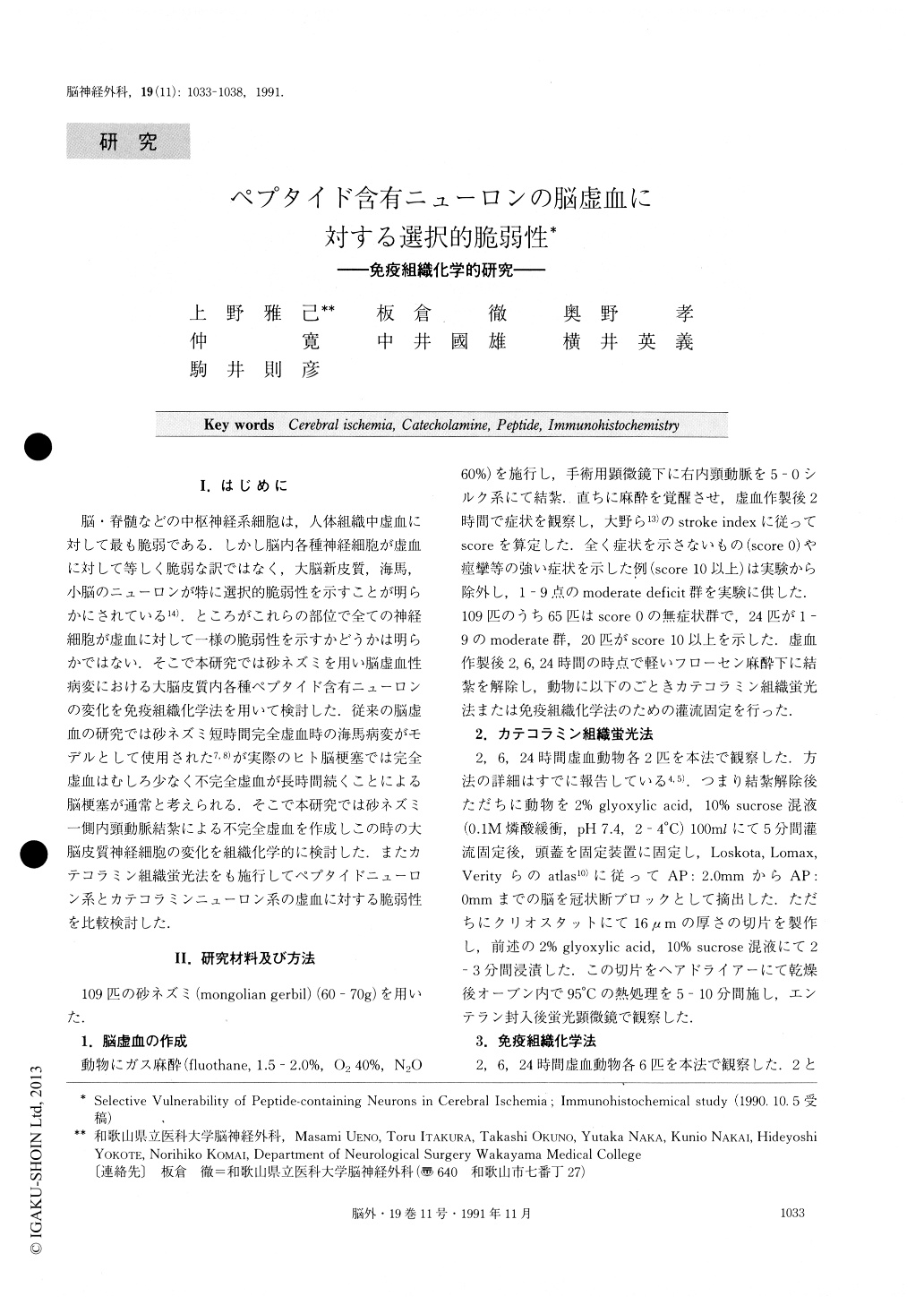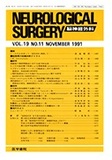Japanese
English
- 有料閲覧
- Abstract 文献概要
- 1ページ目 Look Inside
I.はじめに
脳・脊髄などの中枢神経系細胞は,人体組織中虚血に対して最も脆弱である.しかし脳内各種神経細胞が虚血に対して等しく脆弱な訳ではなく,大脳新皮質,海馬,小脳のニューロンが特に選択的脆弱性を示すことが明らかにされている14).ところがこれらの部位で全ての神経細胞が虚血に対して一様の脆弱性を示すかどうかは明らかではない.そこで本研究では砂ネズミを用い脳虚血性病変における大脳皮質内各種ペプタイド含有ニューロンの変化を免疫組織化学法を用いて検討した.従来の脳虚血の研究では砂ネズミ短時間完全虚血時の海馬病変がモデルとして使用された7,8)が実際のヒト脳梗塞では完全虚血はむしろ少なく不完全虚血が長時間続くことによる脳梗塞が通常と考えられる.そこで本研究では砂ネズミ一側内頸動脈結紮による不完全虚血を作成しこの時の大脳皮質神経細胞の変化を組織化学的に検討した.またカテコラミン組織蛍光法をも施行してペプタイドニューロン系とカテコラミンニューロン系の虚血に対する脆弱性を比較検討した.
Abstract
Histochemical changes in peptidergic and catechola-minergic neurons during ischemia were investigated in the cerebral neocortex of the gerbil. Catecholaminergic fibers were observed by catecholamine histofluoresc-ence with glyoxylic acid solution, and peptidergic neuron systems such as vasoactive intestinal polypep-tide (VIP), somatostatin (SOM), and neuropeptide Y (NPY) were observed by immunohistochemistry.
Two hours after unilateral occlusion of the internal carotid artery, catecholaminergic fibers disappeared in the neocortex on the occlusion side, while peptidergic nerve fibers except for NPY fibers were intact after 2hours of ischemia. NPY fibers had decreased in number on the occlusion side 2 hours after ischemia. VIP-, SOM-, and NPY- immunoreactive neurons showed a decrease of 60% six hours after ischemia, and these neurons completely disappeared in the cerebral neocor-tex 24 hours after ischemia.
These results suggest that catecholaminergic neuron system is more vulnerable than the peptidergic one in ischemic event.

Copyright © 1991, Igaku-Shoin Ltd. All rights reserved.


